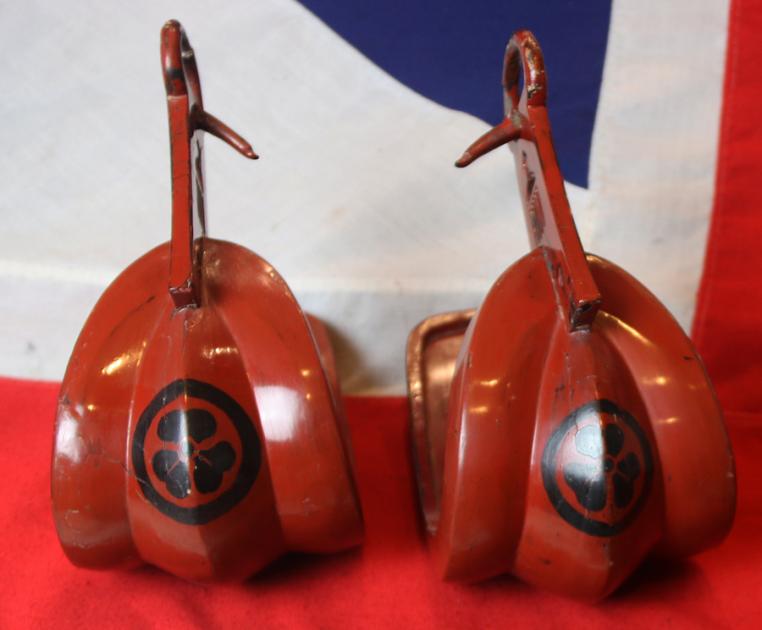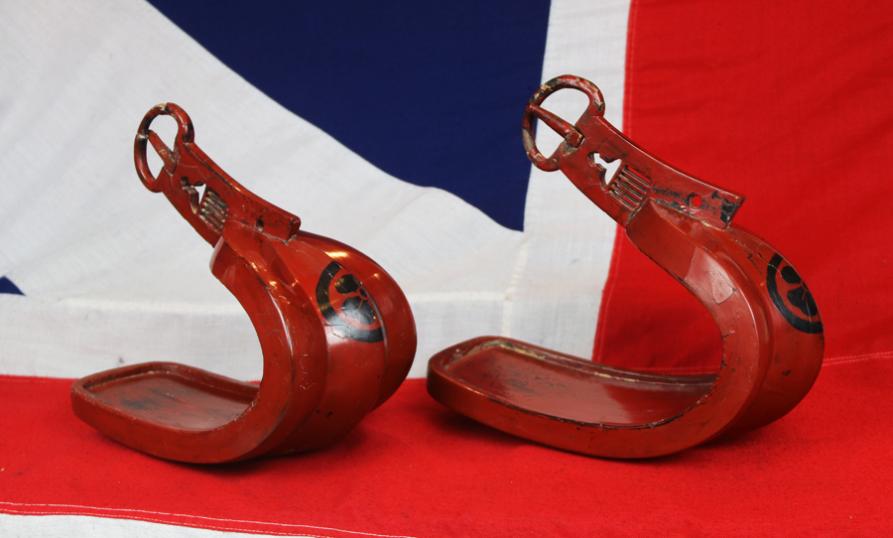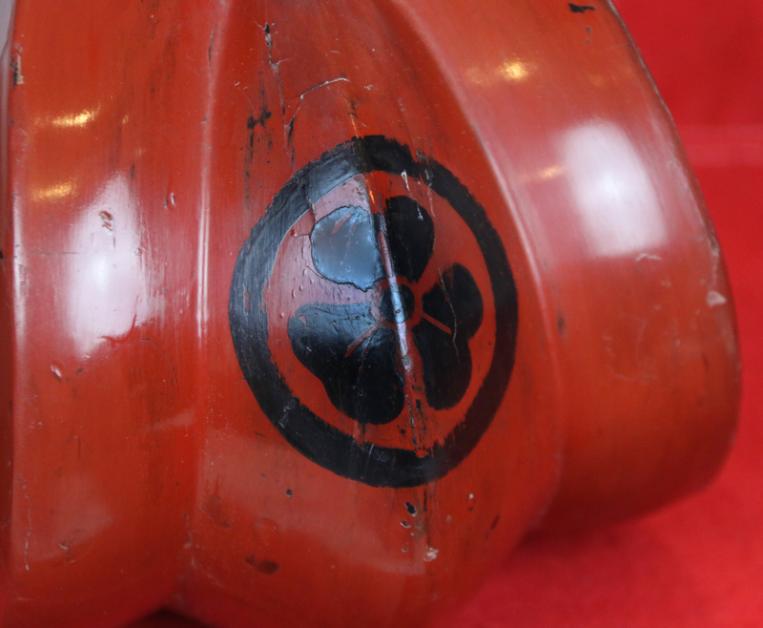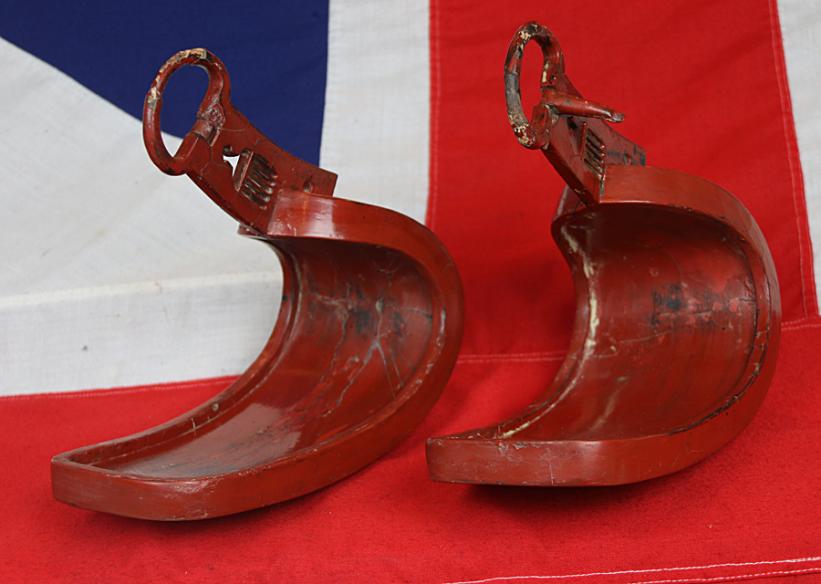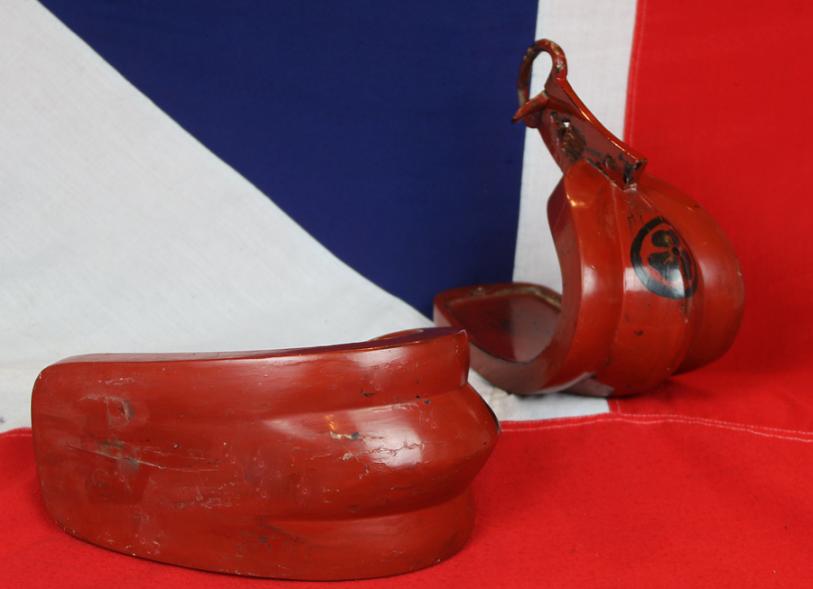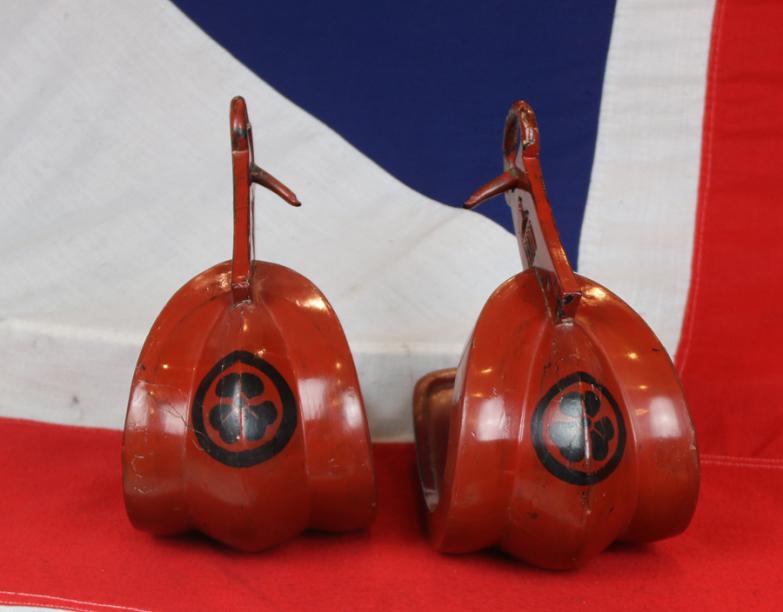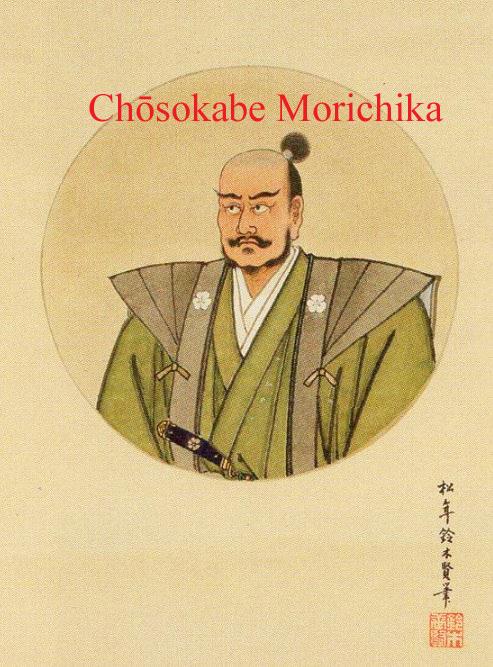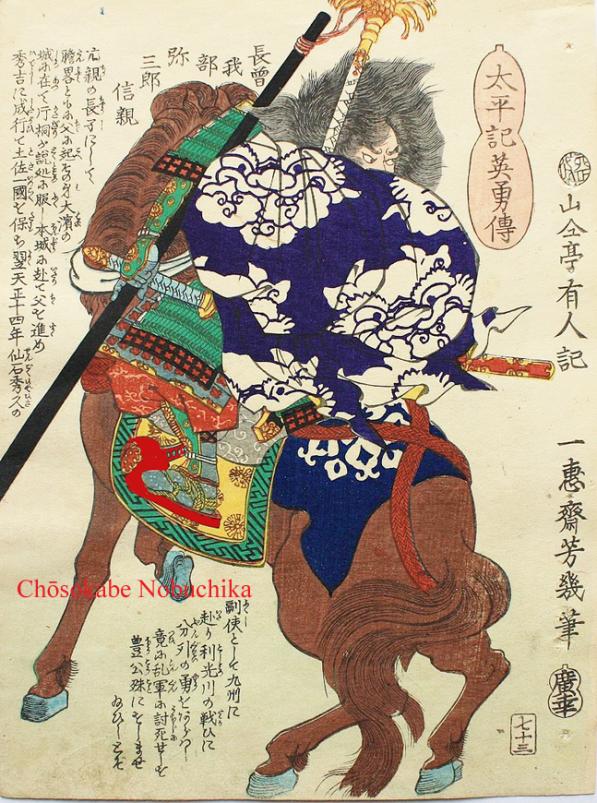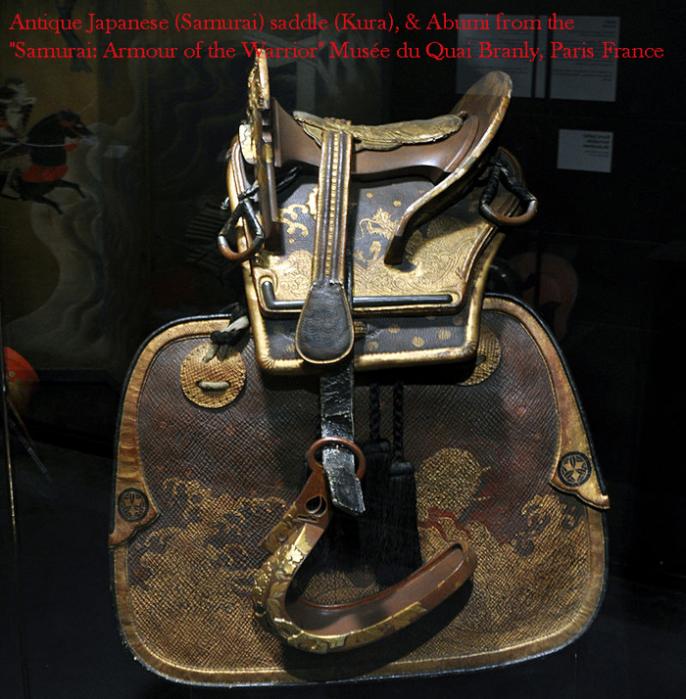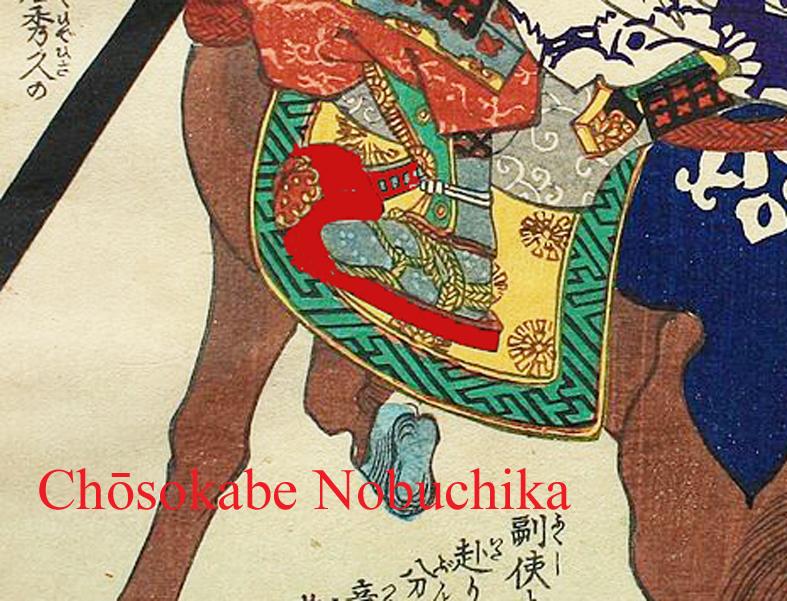A Superb Pair of Red Lacquer Over Steel Abumi, Samurai Stirrups, Edo Period Used by Daimyo or Seieibushi (Elite Samurai) Traditionally the Highest Rank of Elite Samurai of The Sakai Clan,
Simply stunning pieces of antique samurai armour, perfect for the collector of samurai swords, armour and artifacts, or simply as fabulous object d'art, they would be spectacular decorative pieces in any setting, albeit to compliment contemporary minimalistic or fine antique decor of any period, oriental or European.
Decorated at the front with a beautiful kamon samurai clan crest of the renown samurai it's one of popular kamon that is a design of the flower of oxalis corniculata.
The founder of the clan that chose this flower as their mon had wished that their descendants would flourish well. Because oxalis corniculata is renown, and fertile plant.
the mon form as used by clans such as the Sakai, including daimyo lord Sakai Tadayo
One of the great Sakai clan lords was Sakai Tadayo (酒井 忠世, July 14, 1572 – April 24, 1636). He was a Japanese daimyō of the Sengoku period, and high-ranking government advisor, holding the title of Rōjū, and later Tairō.
The son of Sakai Shigetada, Tadayo was born in Nishio, Mikawa Province; his childhood name was Manchiyo. He became a trusted elder (rōjū) in Toyotomi Hideyoshi's government, alongside Tokugawa Ieyasu. Under Hideyoshi, he was made lord of Kawagoe Castle (in Musashi Province, today Saitama Prefecture) and later of Nagoya Castle in Kyūshū's Hizen Province. In 1600, in the lead-up to the decisive Sekigahara campaign, he fought against the Tokugawa at Aizu, and submitted to them at the siege of Ueda. Thus, having joined the Tokugawa prior to the battle of Sekigahara itself, Sakai was made a fudai daimyō, and counted among the Tokugawa's more trusted retainers. He served under Ieyasu for a time, and under the second shōgun, Tokugawa Hidetada, as a hatamoto.
The lacquered iron menpo (face mask) with four-lame yodarekake face armour. The kabuto is signed on the interior Nobutada saku Nobutada made this
During the Japanese civil wars (1467-1568), red was revered by the samurai and worn as a symbol of strength and power in battle, in ancient times it was a lacquer called sekishitsu (a mixture of cinnabar and lacquer). For example it was the trademark colour of the armour of the Li clan, the so called Red Devil’s. In the Battle of Komaki Nagakute, fought in 1584, Ii Naomasa's clan fronted 3,000 matchlock gunmen, his front line forces up wearing what would become the clan’s trademark, bright red lacquered armour, with high horn-like helmet crests. Their fearsome fighting skills with the gun and long-spear, and their red armour had them become known as Ii’s Red Devils. He fought so well at Nagakute, that he was highly praised by Toyotomi Hideyoshi leader of the opposition! Ii Naomasa was known as one of the Four Guardians of the Tokugawa.
Also the similar clan mon of the Chōsokabe clan (長 宗 我 部 氏Chōsokabe-shi ), Also known as Chōsokame (長 曾 我 部 、 長 宗 我 部 ) , Was a Japanese clan from the island of Shikoku . Over time, they were known to serve the Hosokawa clan then the Miyoshi clan, and then the Ichijō clan although they were later liberated and came to dominate the entire island, before being defeated by Toyotomi Hideyoshi . The clan claimed to be descendants of Qin Shi Huang (d. 210 BC), the first emperor of a unified China .
The clan is associated with the province of Tosa in present-day Kōchi prefecture on the island of Shikoku . Chōsokabe Motochika , who unified Shikoku, was the first twenty daimyo (or head) of the clan.
In the beginning of the Sengoku period , Chōsokabe Kunichika's father, Kanetsugu, was assassinated by the Motoyama clan in 1508. Therefore, Kunichika was raised by the aristocrat Ichijō Husaie of the Ichijō clan in Tosa province. Later, towards the end of his life, Kunichika avenged the Motoyama clan and destroyed with the help of Ichijō in 1560. Kunichika have children, including his heir and future daimyo of Chosokabe, Motochika, who continue unifying Shikoku.
First, the Ichijō family was overthrown by Motochika in 1574. Later, he gained control of the rest of Tosa due to his victory at the Battle of Watarigawa in 1575. Then he also destroyed the Kono clan and the Soga clan . Over the next decade, he extended his power to all of Shikoku in 1583. However, in 1585, Toyotomi Hideyoshi ( Oda Nobunaga's successor ) invaded the island with a force of 100,000 men, led by Ukita Hideie , Kobayakawa Takakage , Kikkawa Motonaga , Toyotomi Hidenaga and Toyotomi Hidetsugu . Motochika surrendered and lost the Awa provinces, Sanuki and Iyo ; Hideyoshi allowed him to retain Tosa. The smiths name Motochika was linked to the clan itself. The last picture In the gallery is of samurai Chōsokabe Morichika, ruler of Tosa province. His clan mon, that appears on the abumi and on the tanto on the habaki, can be seen on the collar of his garb, As ruler of Tosa Province, in 1614 he went to join the defenders of Osaka Castle against the Tokugawa, he arriving there the same day as Sanada Yukimura. His Chōsokabe contingent fought very well in both the Winter and Summer at Osaka Campaigns. After the fall of Osaka, Morichika attempted to flee but was apprehended at Hachiman-yama by Hachisuka men, He and his sons were beheaded on May 11, 1615, following the defeat of the Toyotomi and Chōsokabe forces at the Battle of Tennōji. We acquired these abumi with tanto of the 1390's of the same clan, but sold separately.
These abumi are in superb condition for their age, certainly showing signs of use on horseback, but these slight wear marks etc. perfectly compliment their provenance for display.
Code: 23472
3750.00 GBP

